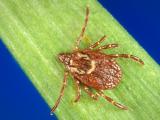Jan 6, 2005 (CIDRAP News) – A 3-year-old Colorado boy fell ill with tularemia after a bite from a pet hamster last year in the first documented case of its kind in the United States, the Centers for Disease Control and Prevention (CDC) reported today.
"Tularemia has not been associated previously with pet hamsters," the CDC says in the Jan 7 issue of Morbidity and Mortality Weekly Report, published online today. "Clinicians and public health officials should be aware that pet hamsters might be a potential source of tularemia."
Tularemia in the United States is usually linked to insect bites or handling carcasses of small animals, particularly rabbits. The disease is caused by the bacterium Francisella tularensis, one of the six biological agents deemed most likely to be used by terrorists.
The Colorado boy's family had bought six hamsters from a Denver pet store in January or February 2004, according to the CDC report. All the hamsters died of a diarrheal disease within a week after they were bought, but one of them bit the boy on a finger before it died. A week later the boy had fever and swollen axillary lymph nodes. His symptoms persisted despite treatment with amoxicillin clavulanate.
Seven weeks after the onset of the boy's symptoms, an axillary biopsy and subsequent laboratory tests led to the detection of F tularensis. The boy had had no other risk factors for exposure to tularemia, such as tick or mosquito bites or contact with game meat. He improved after treatment with ciprofloxacin, the article says.
Investigation revealed that many hamsters kept at or recently bought from the Denver pet store had died around the time of the boy's illness, the report says. But because no carcasses were available for testing, officials couldn't confirm that the hamster was the source of the infection. However, a pet cat that lived at the store had a positive serologic test for tularemia, though it was not sick. In view of the circumstantial evidence and the lack of other possible risk factors, the hamster was the most likely cause of the boy's illness, investigators concluded.
The CDC speculates that wild rodents carrying tularemia might have "infested the pet store and spread the infection to hamsters by urinating and defecating through metal screens covering hamster cages." A similar scenario led to a tularemia outbreak among monkeys in a zoo once before, the report says.
Tularemia has been associated with "hamster hunting" in Russia but has not been previously linked with pet hamsters in the United States, the CDC says. No further cases were found after the pet-store owner was advised to set traps to control wild rodents, the article concludes.
CDC. Tularemia associated with a hamster bite—Colorado, 2004. MMWR 2005 Jan 7;53(51 & 52):1202-3
See also:















